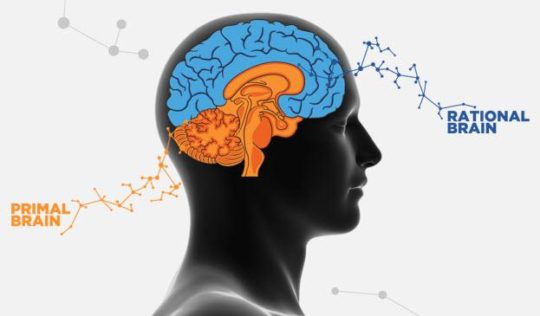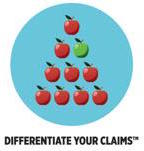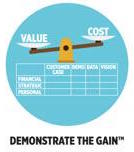What can persuasion science tell you about the effect of your messages on the brain?
Or 7 ways to trigger buying decisions in the brain
Did you know that billions of dollars are wasted on ads that fail to grab attention or motivate people to act? Since the dawn of time, humans have tried to influence one another. Scholars, academics, and researchers have developed countless theories of persuasion which ignore the latest brain research on how people decide.
I have researched the effectiveness of persuasive messages on the brain for nearly two decades. Each day, whether you realize it or not, you participate in or create persuasive arguments you hope will change people’s views, or convince them to buy a product or solution that will change their lives. Unfortunately, few of these messages have a real chance to grab people’s attention, shift their perceptions and lead them to act. The game of persuasion is often a complete waste of time and money.
And if you use conventional research to investigate why people like or dislike your messages, you will not get closer to the truth. Only direct measures of how their brains respond to ads can begin to shed light on the unconscious mechanisms that can really explain and predict the impact sales messages have on the brain.
Persuasion science is a new field that can finally provide scientific answers to questions that have puzzled advertisers, marketers, PR experts but also academics and researchers for decades. But while measuring brain responses has become relatively easier and affordable, the real challenge is to make sense of the gigabytes of data generated by millisecond recordings of brain waves, eye fixations, facial expressions and skin moisture.
After nearly two decades of research and practice in the field of persuasion science (also known as neuromarketing or consumer neuroscience), my partner Patrick Renvoise and I have been able to develop a persuasion theory that can help you avoid many pitfalls in constructing and delivering convincing claims.
A theory of persuasion based on brain science
There are countless theories of persuasion that have been debated for hundreds of years. Curiously, few are anchored in any measure of what happens in the brain when people pay attention, decode the meaning of an argument, feel an emotion related to the message and trigger a decision. Thanks to the phenomenal growth of the field of neuroscience over the last 20 years, new answers have finally emerged to solidify our scientific understanding of how ads can either influence or be disregarded within just a few seconds. Our theory of persuasion is based on the work of remarkable decision scientists and psychologists such as Daniel Kahneman, Richard Thaler, Dan Ariely and many more. It is also based on our own research for private and public projects we have conducted since the creation of our company SalesBrain in 2002.
This is what we have learned the relationship between persuasive messages and the brain: The nervous system has two major systems, but one dominates the processing and it is not the one you would suspect does.
- The Primal Brain: The oldest system composed of a multitude of brain structures that make you safe. The Primal brain manages critical internal states that control attention and emotional resources to address survival-related priorities below our level of consciousness. Think of it as the BIOS of your mind, a set of basic instructions that control how your computer receives input and output. The Primal dominates the processing of all persuasive messages!
- The Rational Brain: The most recent, more evolved part of the brain. Think of it as the latest version of Windows or Mac OS for your brain. The Rational brain is like a suite of enhanced applications you can learn, change or upgrade during your lifetime. This brain uses higher cognitive resources that help mediate some of the responses of the Primal brain.
To be persuasive, target your messaging to your customer's primal #brain, says @christophemorin - #sales Click To Tweet

A science of persuasion based on the dominance of the Primal Brain
Because of the dominance of the primal brain, we like to say that persuasion is a bottom-up effect. So to optimize your chances of getting results from your ads, you need to first and foremost make your messages friendly to the Primal brain. How? By using the 6 persuasion biases that trigger instant Primal brain responses.

Make your message PERSONAL: Think of the Primal brain as the center of ME. It has no patience or empathy for anything that does not immediately concern its well-being. It scans for threats before it attends to pleasure. Vigilance drives the speed and nature of its response.
Make your arguments CONTRASTABLE: The Primal brain is sensitive to solid contrast such as before/after, risky/safe, with/without, and slow/fast. Contrast allows quick, risk-free decisions. Without contrast, the brain enters a state of confusion, which delays a decision, or worse, stalls a decision altogether.
Make your proofs TANGIBLE: The Primal brain needs tangible input. It is constantly looking for what is familiar and friendly; what can be recognized quickly, what is concrete and immutable. The Primal brain cannot process complexity without a lot of effort and skepticism. It appreciates simple, easy-to-grasp, concrete ideas.
Make your story MEMORABLE: The Primal brain remembers little. Placing the most important content at the beginning is a must, and repeating it at the end is imperative. Keep in mind that what you say in the middle of your delivery should be brief and convincing. Don’t go over 3 convincing arguments: your CLAIMS. The Primal brain loves stories because a good narrative construction is easy to remember.
Make your points VISUAL: The Primal brain’s default sensory channel is visual. The optical nerve is physically connected to the Primal brain and at least 25 times faster than the auditory nerve. Therefore, the visual channel provides a fast and effective connection to accelerate decisions. No other sense is more dominant than the visual sense. It is the superhighway of your messages.
Make your impact EMOTIONAL: The Primal brain is strongly triggered by emotions. Emotions create chemical events in your brain that directly impact the way you process and memorize information. In fact, you simply can’t remember events unless you strong “emotional cocktail.” No emotion, no decisions!
A process of persuasion based on 4 critical steps
Learning to speak the language of the 6 Primal brain stimuli is a good start, but your message must be designed to answer 3 critical questions first.
What are the top PAINS of your targets?
 Diagnosing PAINS helps you unveil the most critical decision drivers that influence your customers’ behavior. Our primal nature is to orient our attention to messages that awaken our fears, which is why a product or solution that can clearly articulate which PAINS it can eliminate first will receive more consideration and create higher urgency.
Diagnosing PAINS helps you unveil the most critical decision drivers that influence your customers’ behavior. Our primal nature is to orient our attention to messages that awaken our fears, which is why a product or solution that can clearly articulate which PAINS it can eliminate first will receive more consideration and create higher urgency.
What are your 3 unique CLAIMS?
 Turn your top reasons into short and simple words that are easy to pronounce and information that is clearly organized under a maximum of three chapters or arguments: your CLAIMS. Also, messages that are easy to read, with fonts that are processed with maximum fluency are preferred by the Primal brain.
Turn your top reasons into short and simple words that are easy to pronounce and information that is clearly organized under a maximum of three chapters or arguments: your CLAIMS. Also, messages that are easy to read, with fonts that are processed with maximum fluency are preferred by the Primal brain.
What is the evidence of your GAIN?
 Your value demonstration needs to be understood by a brain that does not even understand the future. This means that you need to make that demonstration simple enough that even a non-expert would understand it in the present moment. Use customer testimonials or demos to, create ah-ha moments your targets needs to confirm a decision.
Your value demonstration needs to be understood by a brain that does not even understand the future. This means that you need to make that demonstration simple enough that even a non-expert would understand it in the present moment. Use customer testimonials or demos to, create ah-ha moments your targets needs to confirm a decision.
Putting together a persuasion message using a theory can deliver phenomenal results. The guidance we provide above is further illustrated in the following infographic you can also conveniently download from our website at www.salesbrain.com. Why take so many risks and gamble with all the dollars you put on ads, web pages, videos and more?

For more information on SalesBrain and the new book published by Patrick Renvoise and Dr. Christophe Morin, visit www.salesbrain.com.
